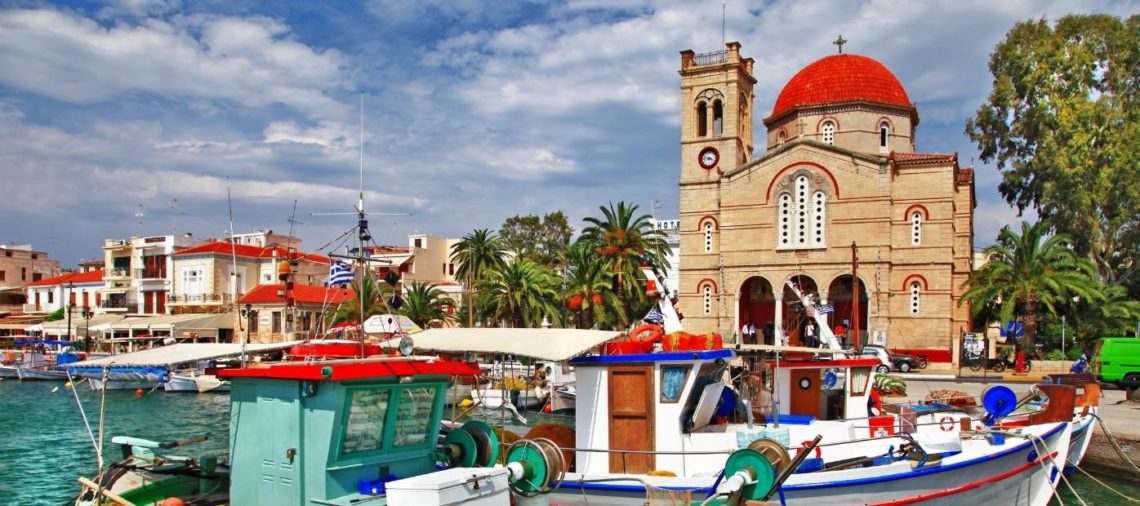Situated in the middle of the Argo-Saronic Gulf, just 27 km from the port of Piraeus, Aegina Island is one of the favorite destinations of Athenians. A rich history dating back to the 4th millennium BC, idyllic scenery – picturesque villages and beautiful beaches – and interesting gastronomy attract visitors to this island in the Saronic archipelago.
The island was originally called Inoni (or Inopa/Inopia). The later name, Aegina, comes from one of the 50 daughters of the river god Asopus, who became nymphs after being kidnapped by the gods. To avoid Hera, Zeus transformed himself into an eagle and took Aegina, with whom he had fallen in love, to the uninhabited island of Inoni. The fruit of the passion between the god of gods and Aegina was a boy – Aeakos, the island’s first king. He asked his father to give him subjects, so Zeus turned the ants on the island into humans. The first inhabitants of Aegina were called myrmidons, from the Greek word ‘myrmigi‘ – ant.
If you are in Greece’s capital and you want a day trip, here are 7 best day trips from Athens.
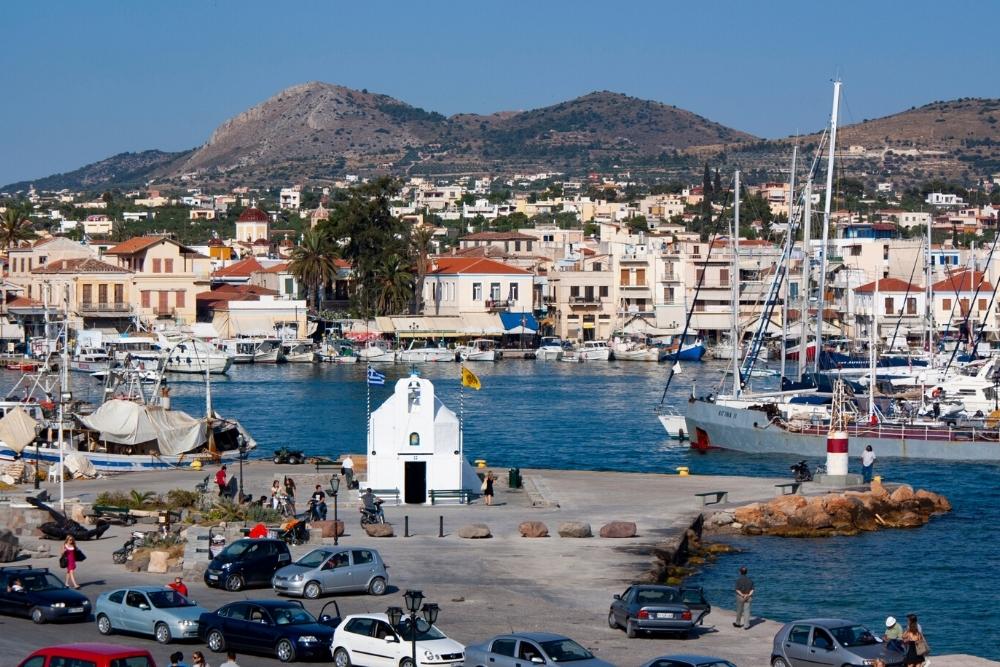
Aegina flourished between the 8th and 5th centuries BC, when it was the first city to mint coins and when the island’s fleet was in control of the entire eastern Mediterranean, its greatest moment of glory being when it helped defeat the Persians at the Battle of Salamis (480 BC). Another important moment came after the 1821 revolution against the Ottomans when Aegina was briefly designated the first modern capital of Greece (1827). This lasted only two years, with the capital being transferred to Nafplion in 1829, but Aegina continued to be a focal point of Greek social, political, financial, and commercial life.
What to do and see on Aegina Island
Map with the main tourist attractions in Aegina Island (zoom for details)
Although Aegina is a small island (it’s 100 square kilometers), it has a lot to offer for its visitors. From the famous Aphaia Temple, which forms the famous ‘holy triangle’ together with the Parthenon and the Temple of Poseidon at Sounion, to the capital town that bears the island’s name; from villages with distinct personalities such as Agia Marina, Souvala, or Vagia to the Sanctuary of Apollo and the home of the famous writer Nikos Kazantzakis.
Aegina Town
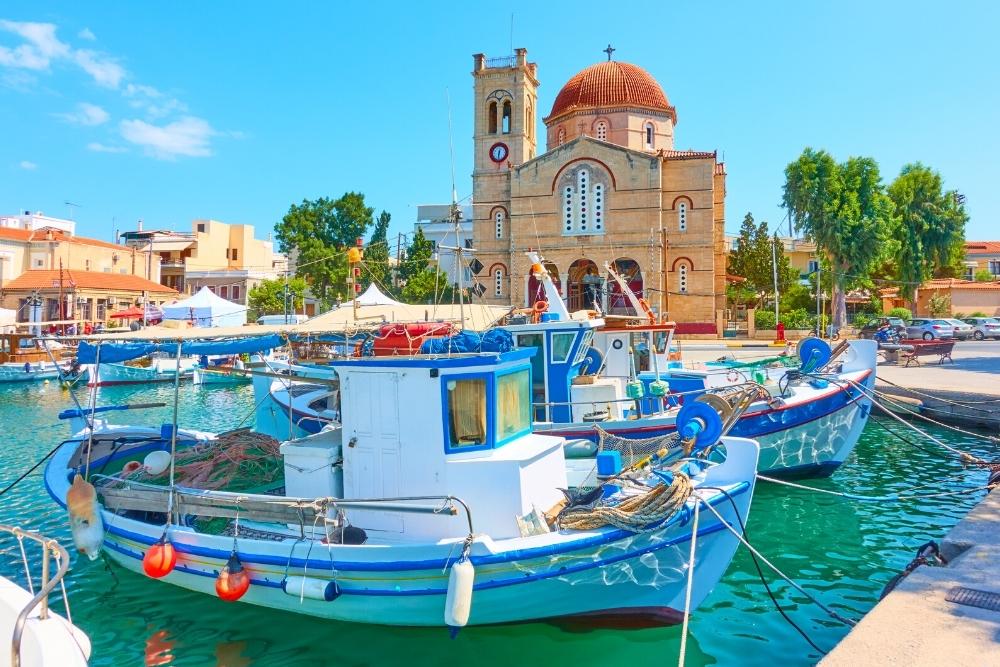
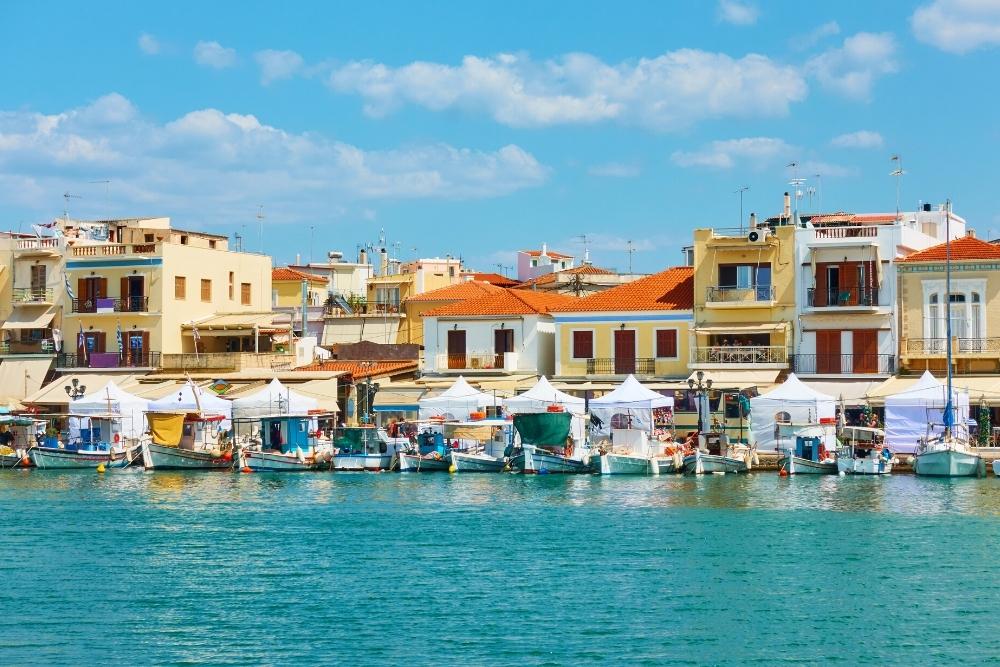
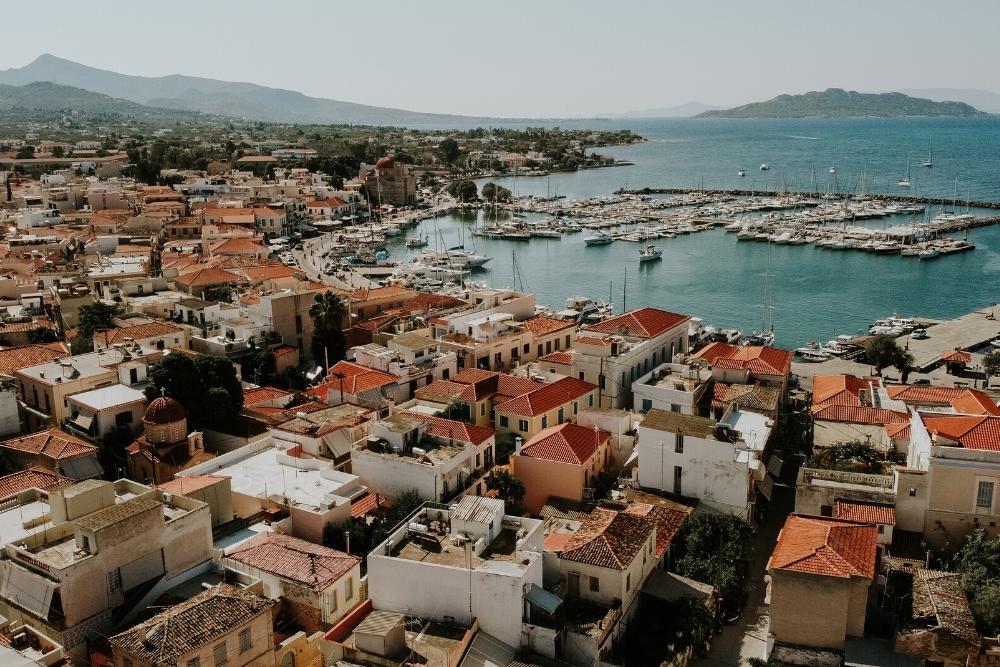
The island’s capital, Aegina, is a town that somewhat reviews the history of the place it was built on. Strolling through the town’s narrow streets takes you through the Venetian era, after which the main ‘story’ of the wartime with the Ottomans is the superb Markellos Tower, built in the late 17th and early 18th centuries for defensive purposes. A short distance from the harbor is the Sanctuary of Apollo, dating from the 6th century BC.
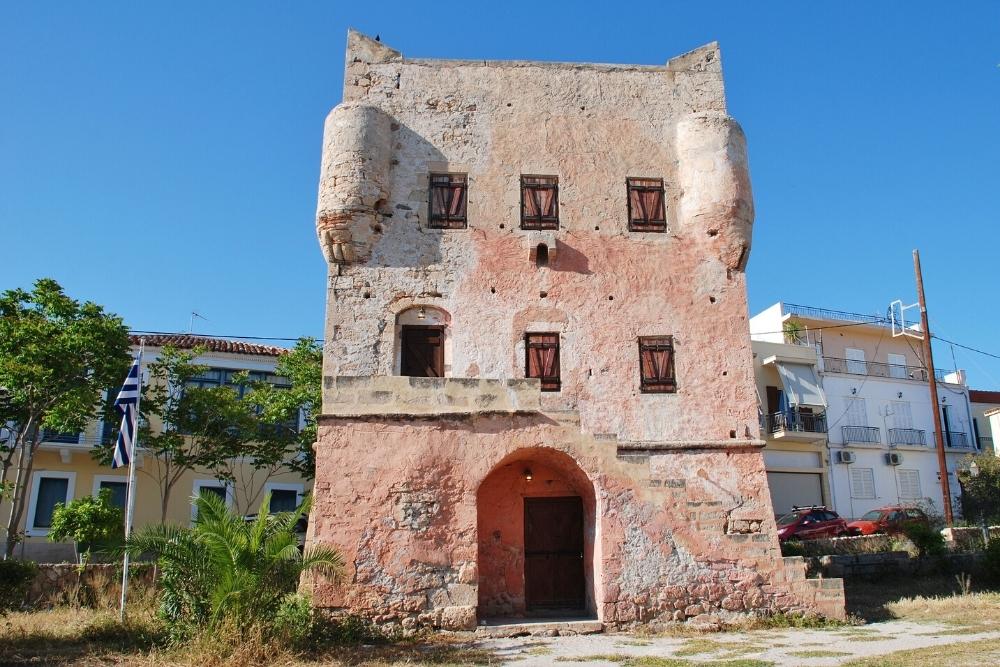
Near the tower are the so-called Kopodistrian buildings (which include the Orphanage, the Governor’s House, and the Eunardios School) – all dating from the early 19th century, when Ioannis Kapodistrias was the first leader after the declaration of Greek independence and the man who briefly designated Aegina as the country’s capital. History buffs can learn more by visiting the Museum of History and Folklore and the Museum of Archaeology.
Aphaia Temple
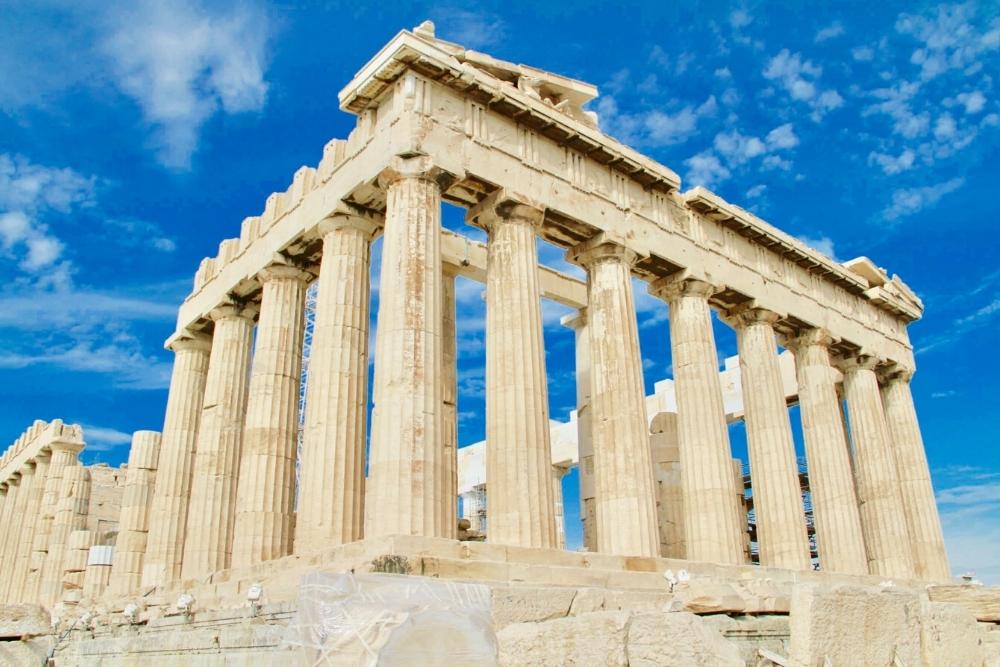
The Temple of Aphaia was dedicated to the goddess of the same name and sits on top of a hill on the island of Aegina, specifically in Agia Marina. It is one of the architectural wonders of Ancient Greece. It was erected in 480 BC, and 25 of the original 32 Doric columns have been preserved to the present day with the help of restorations.
The temple was built on the ruins of another temple built in 570 BC and destroyed in a fire in 510 BC. The prosperity generated by the maritime boom on the island of Aegina in the 6th and 5th centuries BC was the main reason for the construction of the Aphaia Temple. Initially, it was thought that the temple had been dedicated to Jupiter Panhellenius and attributed to Athens.
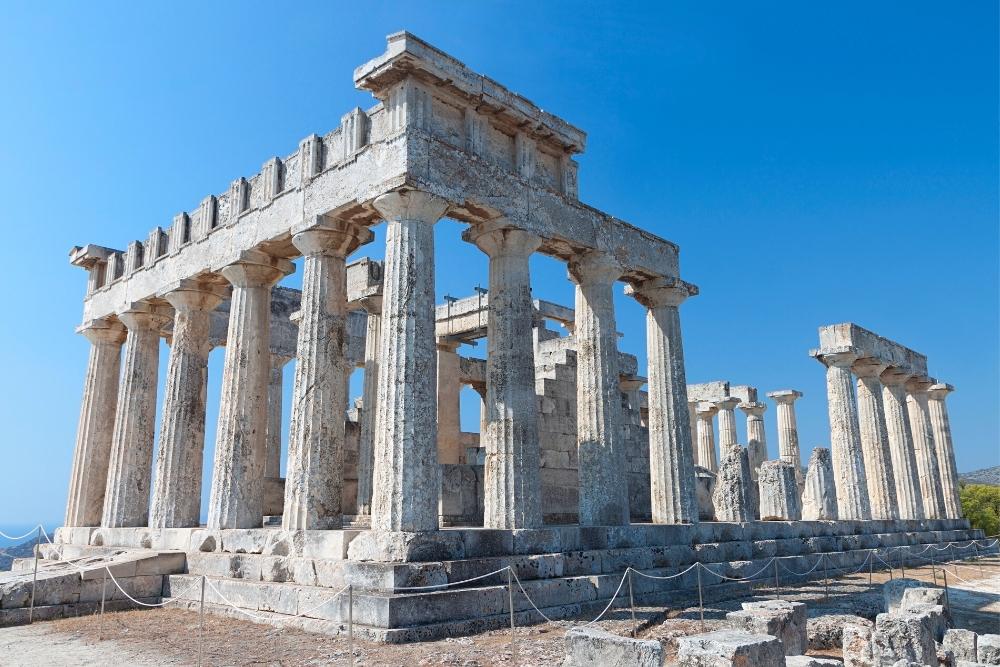

Later a relic was discovered containing an inscription that the temple was built in honor of the goddess Aphaia (or Aphea). She was a stunningly beautiful Cretan woman who a fisherman rescued from Aegina after escaping an unhappy marriage in Crete. He believed the woman to be a deity and dedicated a shrine to her on top of a hill in Agia Marina. Aphaia was elevated to goddesshood by the goddess Artemis herself and is known as the ‘goddess of fishnets’.
Sanctuary of Apollo
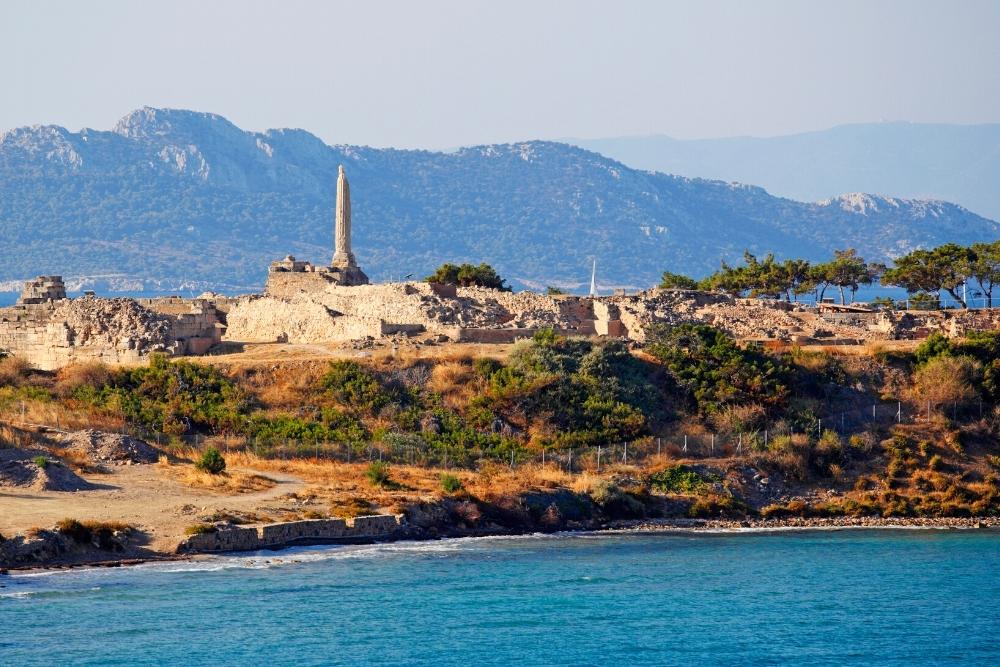
The Sanctuary of Apollo Delfinios sits on a small hill near the town of Aegina and is one of the first things you notice when you arrive at the port. It’s the only thing left of the Temple of Apollo (also called Kolona), which was built in the 6th century BC, the mountain of the same name being an important religious center of the area. It’s worth visiting for the ruins themselves and because it’s set in a beautiful natural environment, with olive trees and wildflowers growing among the stones. The view of the harbor is a special one.
Monastery of Agios Nektarios
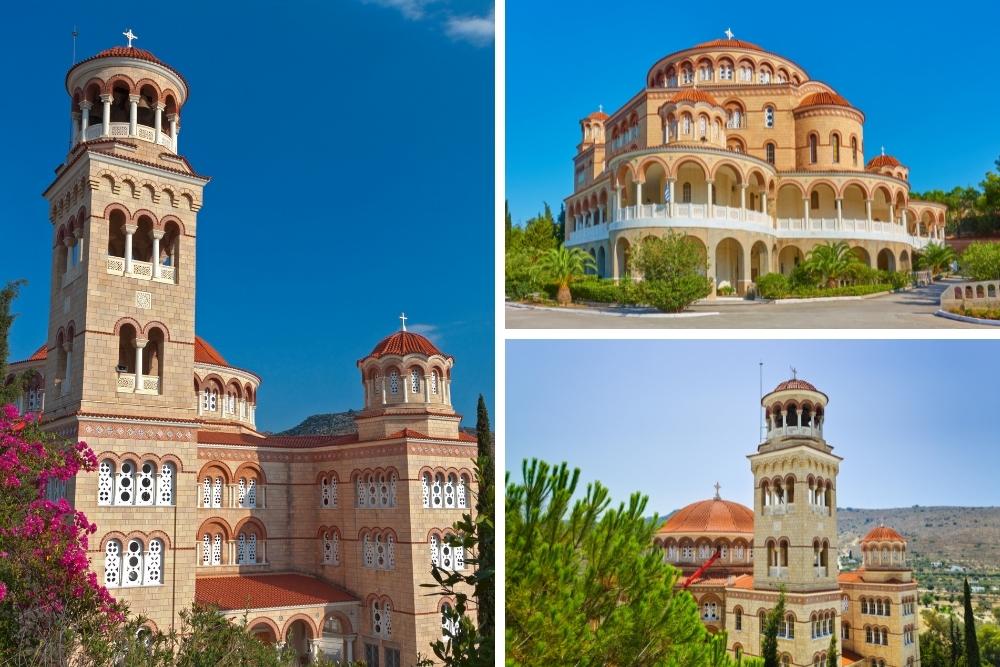
Orthodox monasteries dot the island of Aegina, just like any other island in Greece. The most spectacular of these is certainly Agios Nektarios (St Nectarios). Located near the village of Paleochora, the former capital of Aegina, Agios Nektarios was built between 1904 and 1910 on the site of a former Byzantine monastery and is one of the largest monasteries in the Balkans.
Paleochora
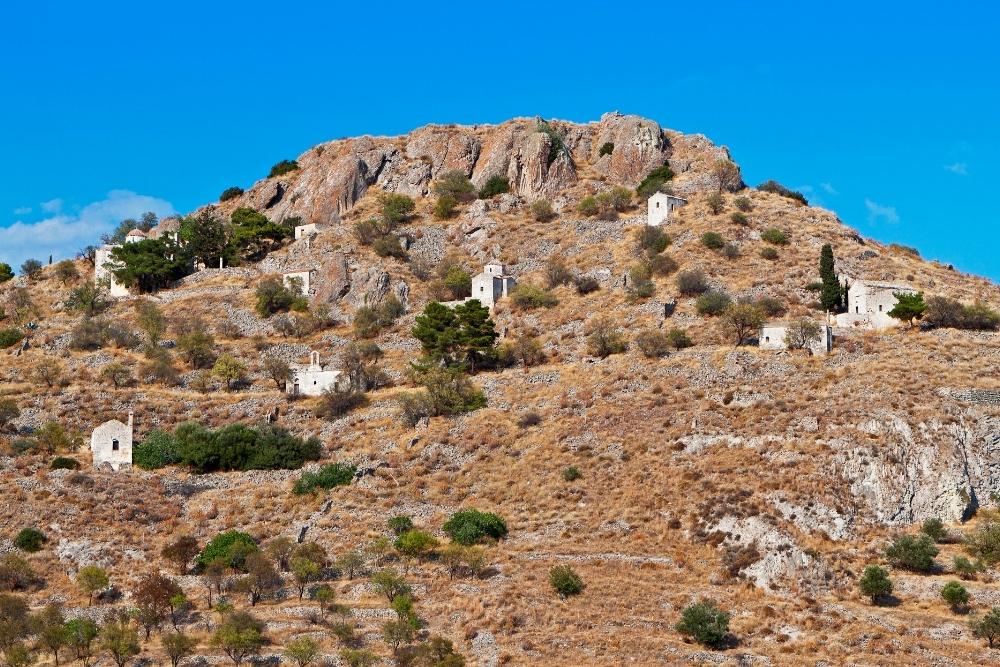
Speaking of Paleochora, a town that was founded in the 9th century to protect the island from Saracen pirates and its capital until 1826, it is worth visiting for the special energy it exudes and the relics it houses. Most of them are on an easily ‘conquered’ hill, where there are traces of a castle built by the Venetians in 1654.
Moni Island
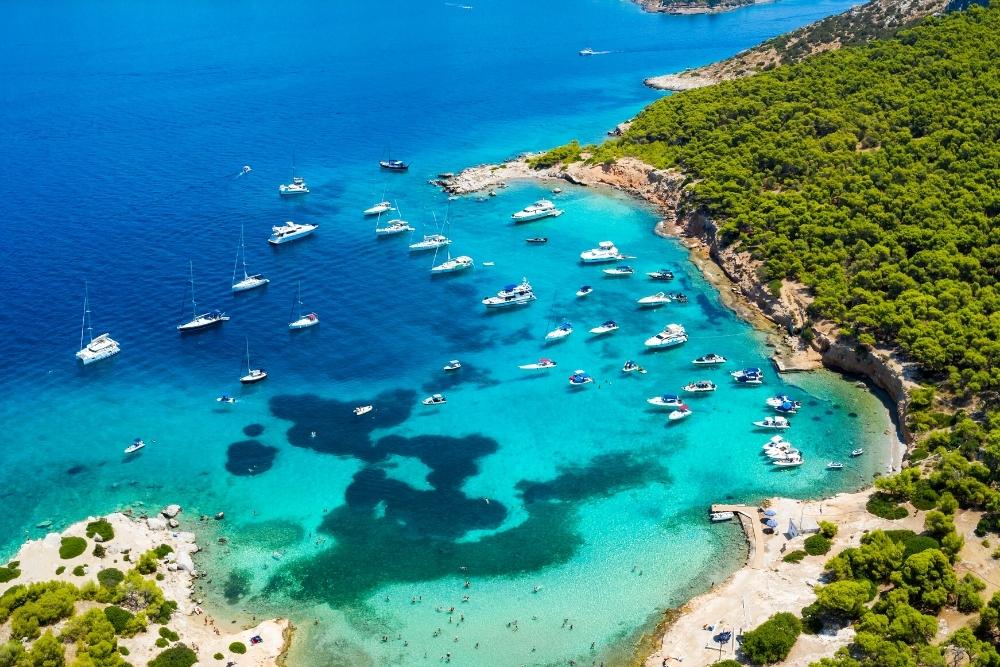
A 10-minute boat ride from Aegina, Moni islet is a great idea for a day trip to enjoy the turquoise waters surrounding it and the rich vegetation that covers it. Particularly on the northern coast, Moni has small beaches where you can sit in the sun and swim in calm water.
Moni is not an inhabited island, but here you may be lucky enough to see a few deer, kri-kri goats brought from Crete, and falcons. A hike through the pine forests takes you to a German observation post from World War II, when the Germans used this island to defend the port of Piraeus from Allied attacks.
Aegina, pistachio island
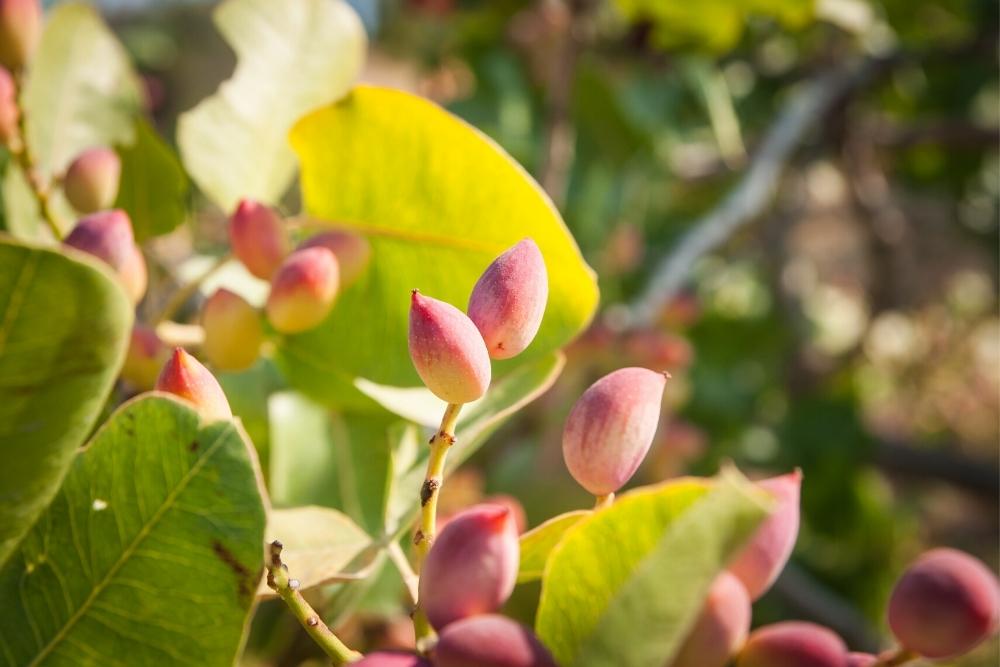
If you like pistachios, then you’ve come to pistachio heaven! Aegina is the island where pistachios are everywhere and in all forms: fresh, roasted (salted or unsalted), in dishes, sprinkled on breakfast, in pesto, or ice cream. A stop at the historic Aiakeion patisserie-café in the Old Town is a must if you want to try one of the best pistachio desserts and buy pistachio products. Another recommendation along the same lines is Mourtzis, behind the fish market, where you’ll find local produce and can’t leave without the famous fistikato – pistachio paste au gratin with caramel, topped with… pistachios and syrup.
Beaches in Aegina
Although not numerous, Aegina has beaches of all kinds, well-equipped or secluded, and most are easily accessible. The most popular is Agia Marina beach, but the northern beaches are definitely worth visiting, especially Loutra Souvalas and Vagia. However, in the south, Perdika and Marathonas beaches are perfect for bathing.
Agia Marina beach
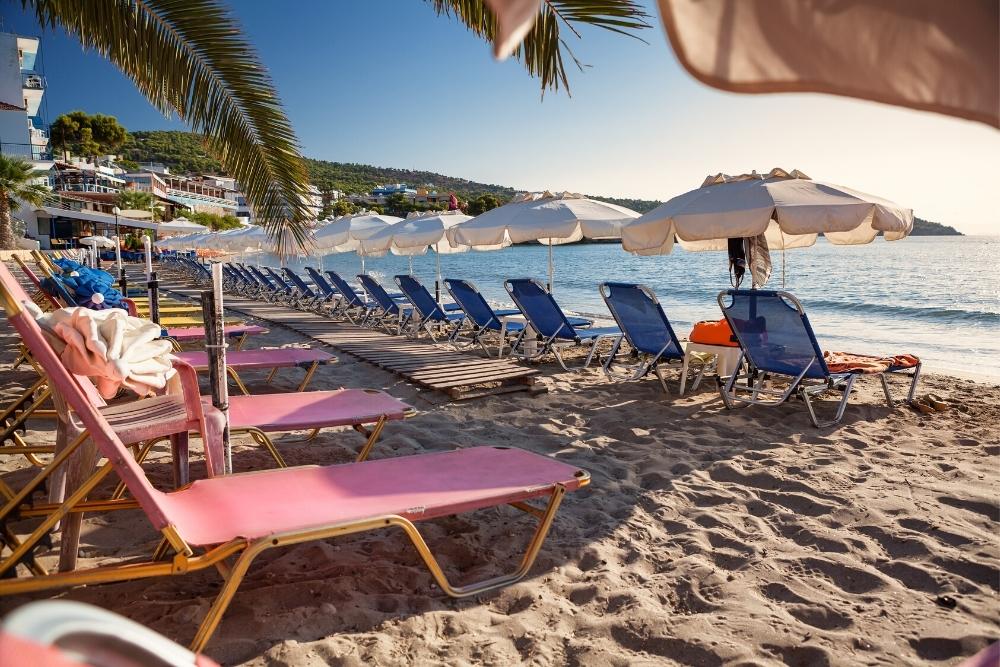
Agia Marina is a large, well-equipped beach with sun loungers and umbrellas in the town of the same name. There are also two bars here. It offers the possibility to practice water sports, as the waters are relatively calm, making it very suitable for families. It’s generally a sandy beach, but there’s a pebbly section, and the water in that area is good for snorkeling and fishing.
Souvala Beach
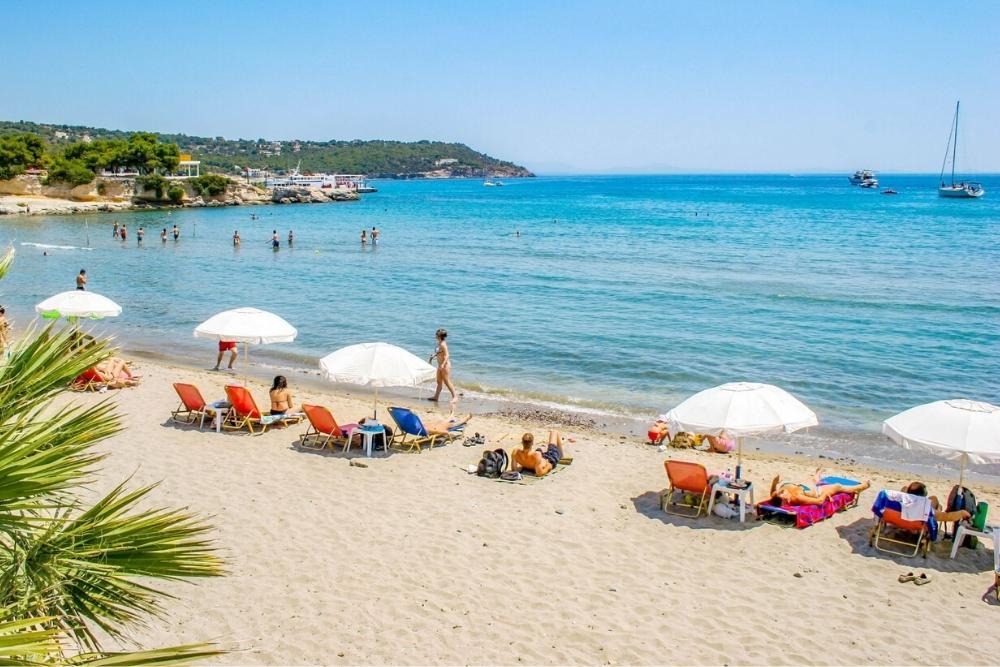
Souvala is a small village 10km north of the port of Aegina, which itself has a harbor connected to its big ‘brother’ Piraeus on the mainland. In Souvala you’ll find a pebbly sandy beach and tavernas, accommodation, and cafes, most of which are located by the sea. Souvala is quite crowded in summer and is a favorite with locals in particular.
Marathonas Beach
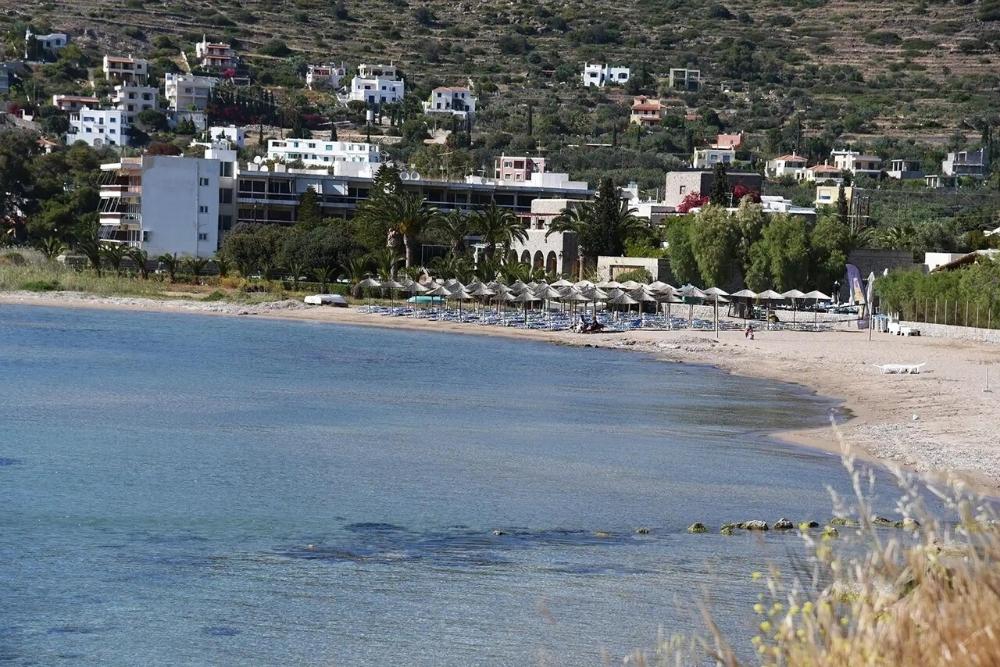
Marathon is a picturesque fishing village, run by traditional rules, much loved by tourists. Marathonas beach, in this village, is a sandy, relatively secluded beach, quieter than others in Aegina. In fact, there are two stretches of sand, with tavernas and bars on one, while the other is well organized with sun loungers and umbrellas.
Other beaches on the island of Aegina
If you are not satisfied with the above beaches, you can also search for Portes beach, Perdika beach, Vagia beach.
Best hotels in Aegina
Rastoni Hotel Aegina ***
Booking rating: 9.3
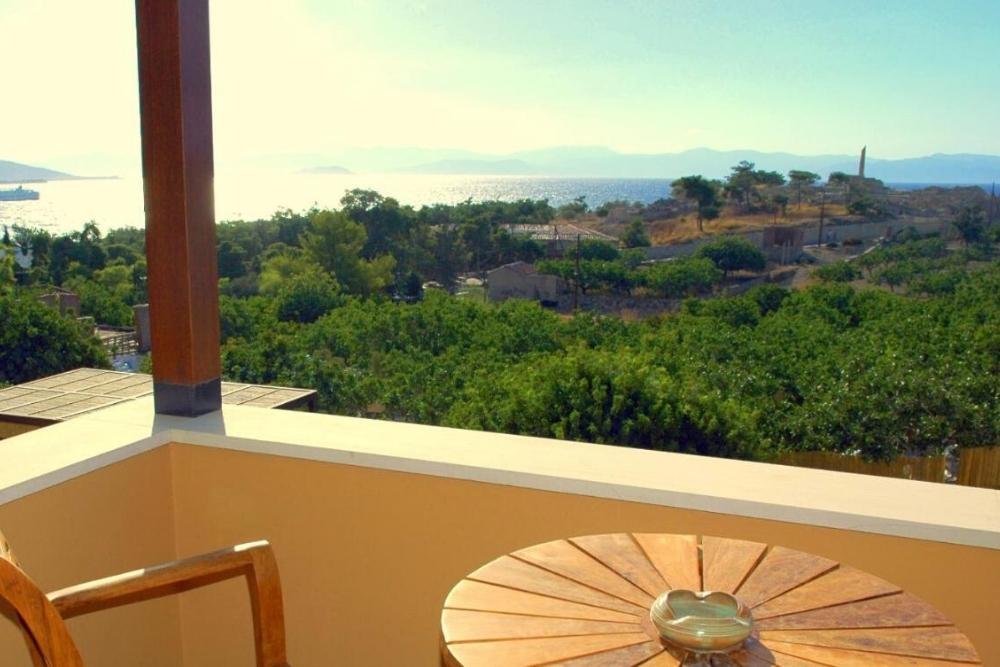
Rastoni is five minutes from the beach, in a quiet location in the middle of a pistachio farm, 600 meters from the capital Aegina and its harbor. The spacious rooms are colonial in style and have balconies overlooking Saronic Bay and the Sanctuary of Apollo.
Angela Hotel
Booking Score: 9.4
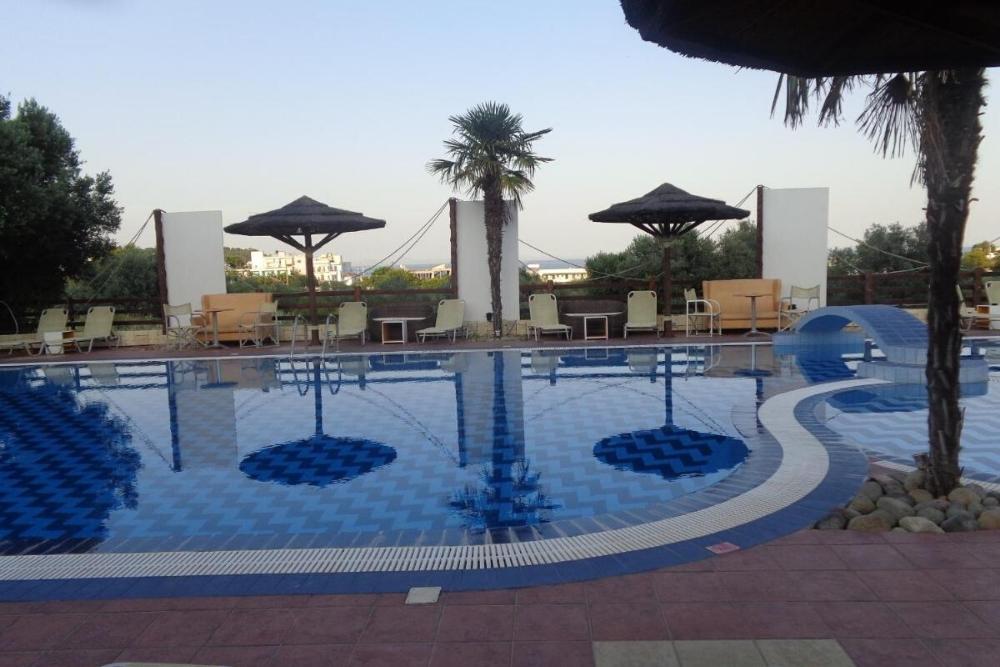
A family-run hotel with quiet rooms set among pine trees in a garden in the center of Agia Marina. Just 100 meters from the sandy beach, rooms overlook the garden and surrounding mountains. A swimming pool is just 150 meters away.
Isidora Hotel **
Booking Score: 9.4
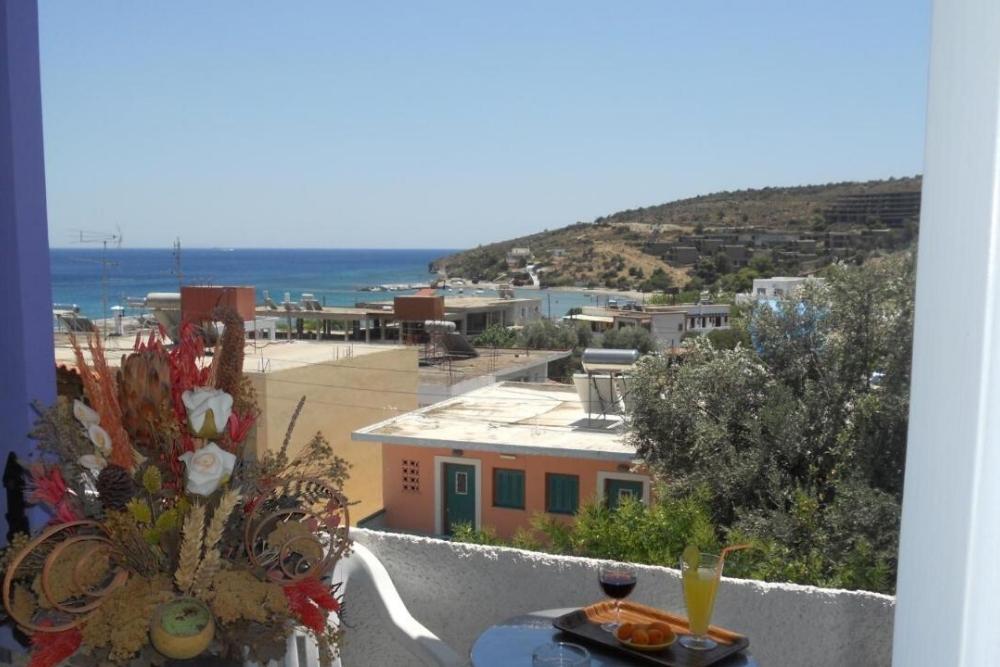
Isidora Hotel is 500 meters from the port of Agia Marina, 2 minutes from the beach of the same name, and 2 km from Aphaia Temple. It is a family-run hotel with well-equipped rooms, each with a kitchenette. Aphaia Temple
Best restaurants in Aegina
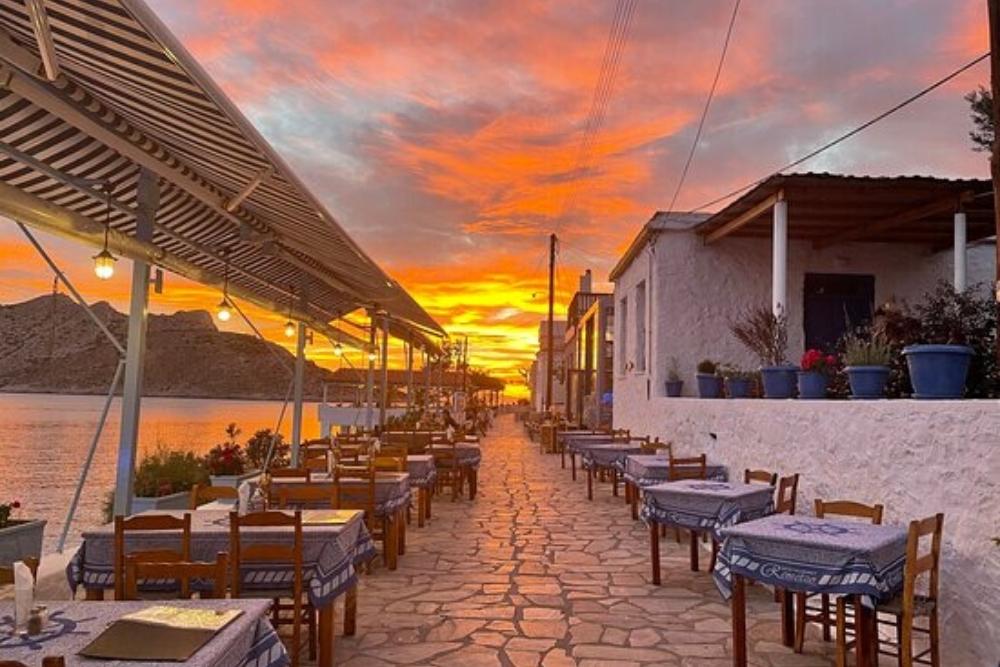
Ammos
A spectacular place whose owner does everything to make you feel great and enjoy his dishes right on the seafront, on Marathonas beach. The menu is inventive, featuring orange and radish salad, arugula, caramelized pistachios, and goat’s cheese. The wine list is short but… brisk.
Thymari
The restaurant is located in Agia Marina, and those who’ve been there say the menu includes fancy salads, delicious desserts, and dishes for both meat lovers and seafood lovers. All in a presentation all of its own.
Remetzo
Good food, fresh ingredients, friendly atmosphere. Owners Noti and Antonia put their own stamp on Greek gastronomy, including holding a certificate of authenticity and quality since 2005. Try saganaki with mussels, saganaki with prawns, and octopus in wine sauce.
How to get to Aegina

Aegina is one of the most popular destinations for Athenians, with the island just an hour away from the Greek capital. There is no airport on Aegina, so it is served only by ferries, which leave daily from the port of Piraeus (30 minutes to 1 hour, depending on the boat) and from other islands of the Saronic archipelago – Agistri, Poros, or Hydra.
Aegina can be visited on a day trip, but you can also spend a few days here. The best option is to rent a car (or have your own car) to get between the various points of interest on the island more quickly.
Pin it!
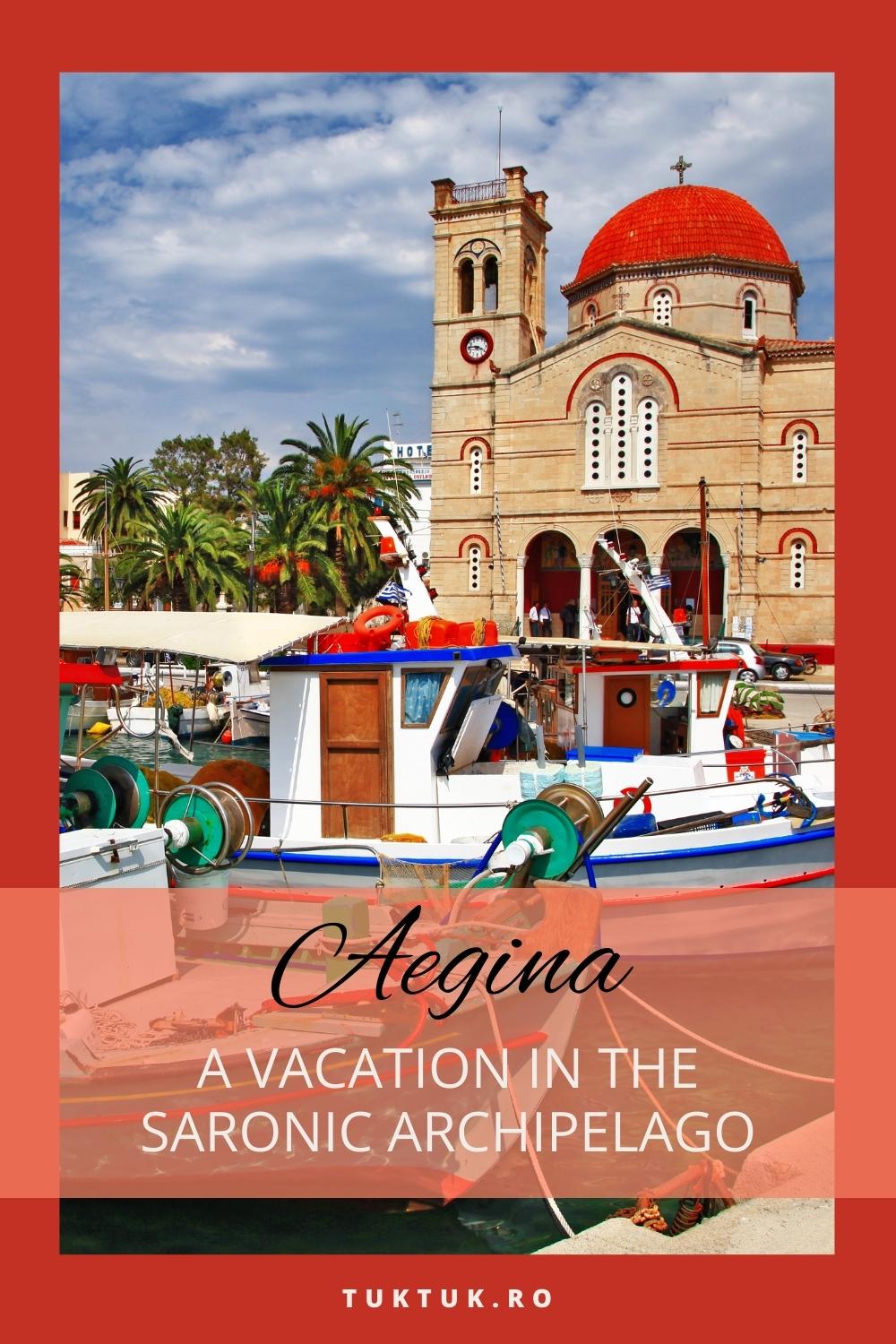
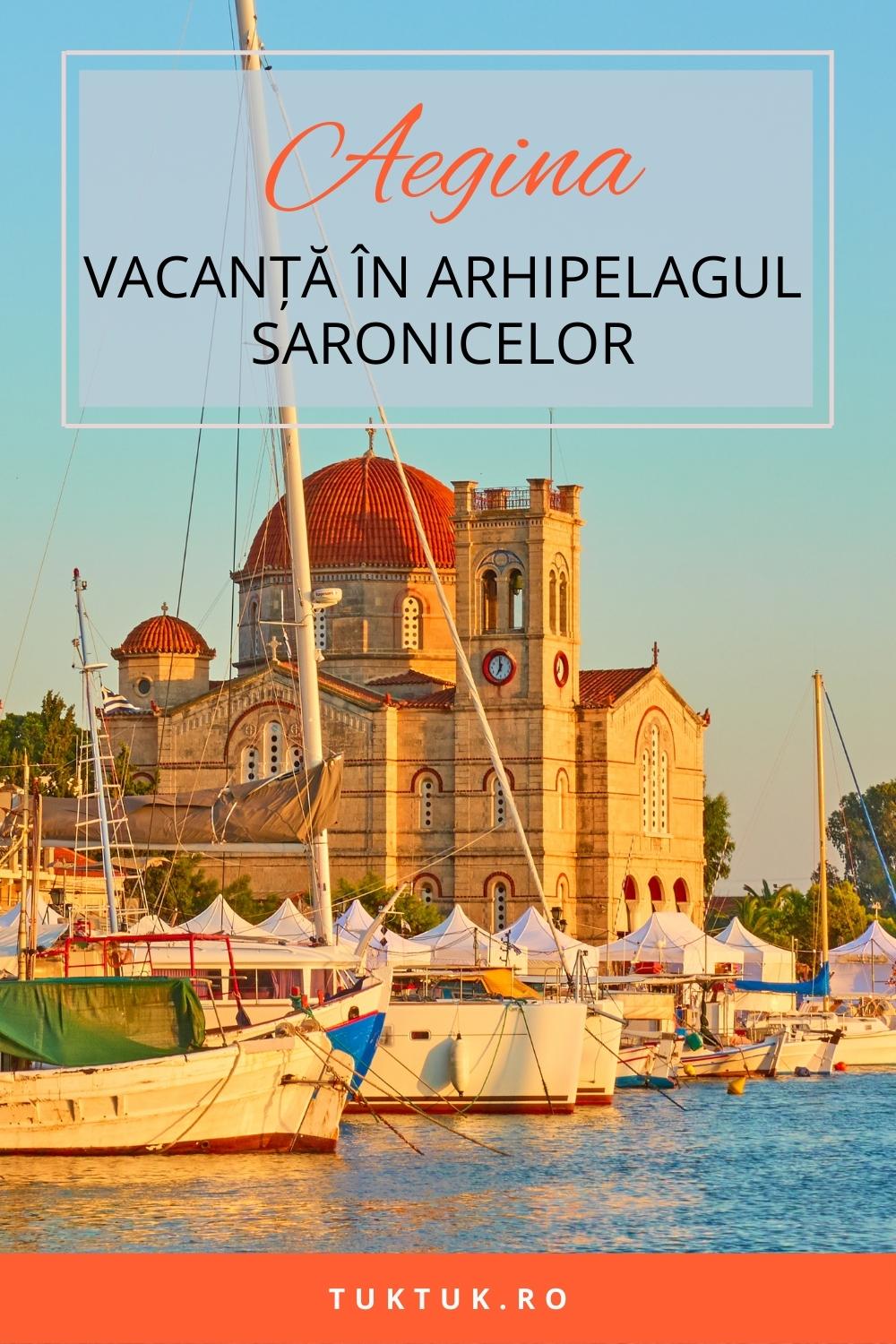
You may also like: Karpathos Island, the dream place where the gods escape

